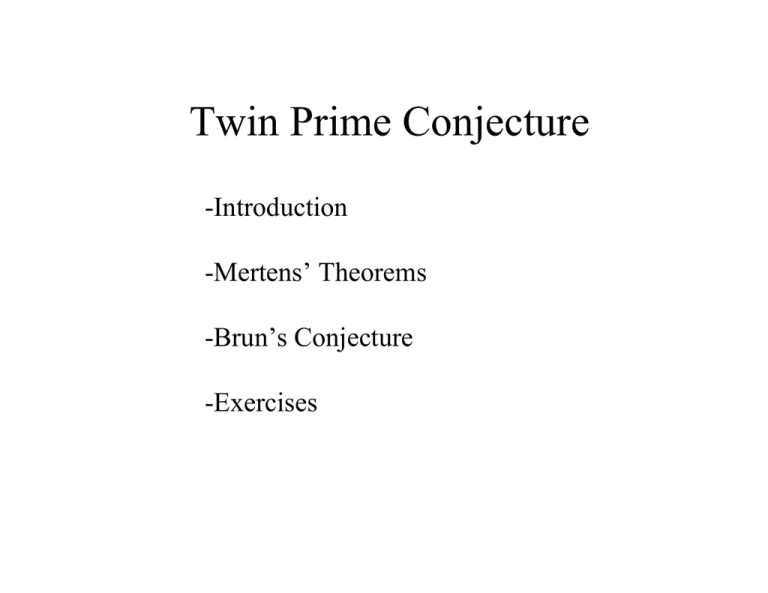Twin Prime Conjecture -Introduction -Mertens’ Theorems -Brun’s Conjecture
advertisement

Twin Prime Conjecture
-Introduction
-Mertens’ Theorems
-Brun’s Conjecture
-Exercises
Introduction
“Twin Prime” – Paul Stackel, 1880s
{p, p+2} equivalently, {6n+1, 6n-1}:
6x + 0 =/= prime = 6x
6x +1 = prime
6x + 2 =/= prime = 2(3x+1)
6x + 3 =/= prime = 3(2x +1)
6x + 4 =/= prime = 2(3x +2)
6x + 5 = prime = 6y - 1
The Prime Counting Function and the
Twin Prime Constant
Twin Prime Counting Function:
Prime Counting Function
Formulated by Mertens
Twin Prime Constant
:=
Formulated by Hardy and Littlewood
Mertens’ Theorems
Mertens’ Second Theorem
Mertens’ Theorem 4:
This shows that the sum of reciprocals of primes diverge, whereas
the reciprocals of twin primes converge
Let
Then U(t) = 0 for t < 2 and g(t) = O(1) by our assumption
Now we not only know that the reciprocals of
primes diverge, but that they diverge like the
function ln(ln(x)).
(This result, which we assumed in the last theorem, actually has an
involved proof using the Brun Sieve technique)
Fun Exercise: How many primes are in an interval?
We can first evaluate this by using Euler’s
expression for the prime counting function.
This does not mean that the number of primes in an interval
of length n is equal to the number of primes in the sequential
interval of length n. Instead, it means that
Conclusion
The infinitude of twin primes has not been proven, but current
work by Dan Goldston and Cem Yilidrim is focused on a
formula for the interval between two primes:









